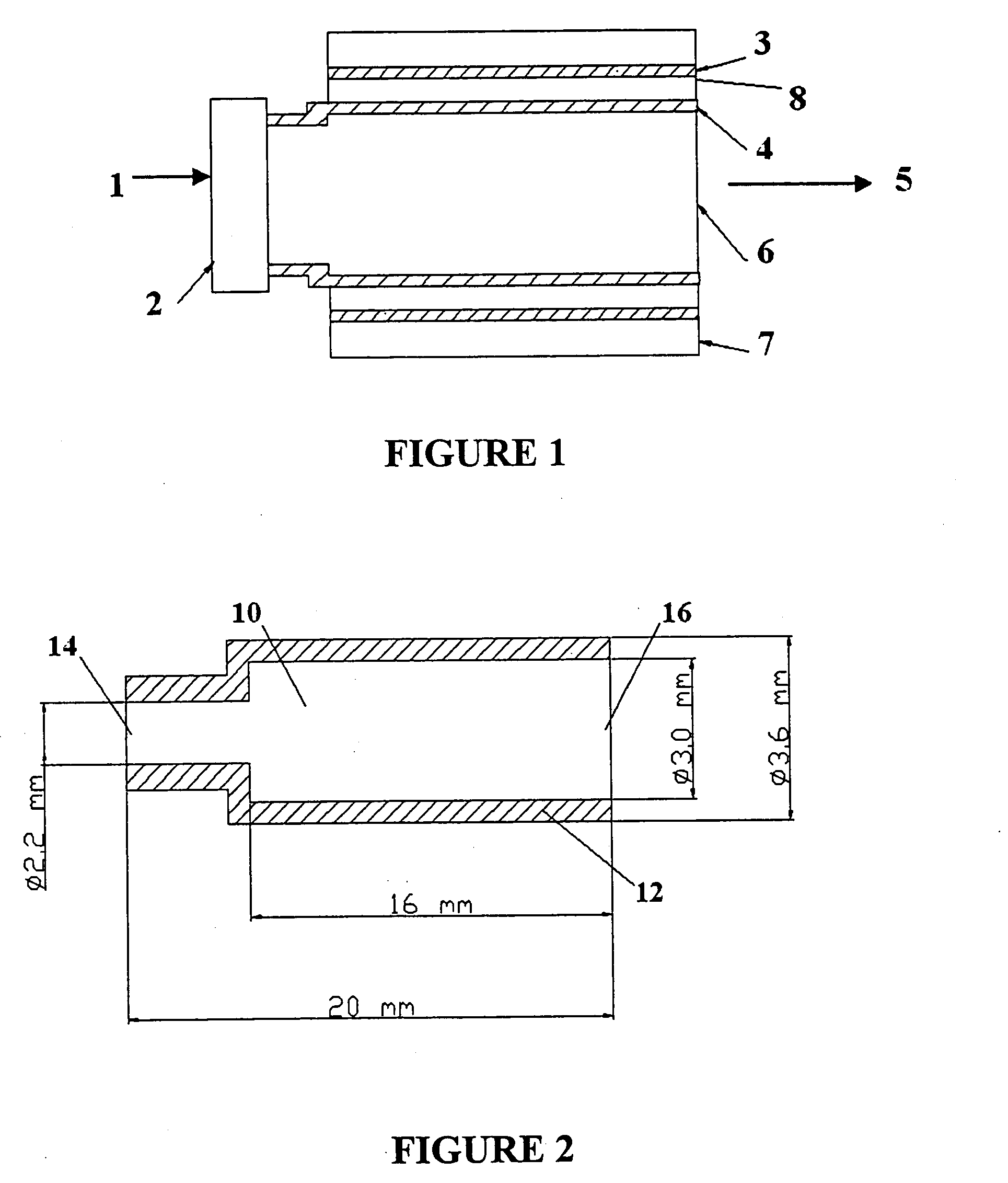Thermophotovoltaic power supply
a technology of photovoltaic power supply and photovoltaic generator, which is applied in the direction of photovoltaics, electrical equipment, and semiconductor devices, etc., can solve the problems of micro-power systems, short operating cycles between charges or replacements of typical portable mechanical devices, and limited miniaturization of these devices
- Summary
- Abstract
- Description
- Claims
- Application Information
AI Technical Summary
Benefits of technology
Problems solved by technology
Method used
Image
Examples
Embodiment Construction
[0035] The present invention overcomes or at least ameliorates the shortcomings of high heat loss due to the high surface-to-volume ratio of a microcombustor. The micro-TPV system is a novel micro power generator which uses photovoltaic (PV) cells to convert heat radiation, for example from the combustion of fuels, into electricity. For micro-TPV application, the desired output is a high and uniform temperature along the wall of the microcombustor. Compared to conventional macro-TPV systems, the micro-TPV systems feature a much higher power density per unit volume due to the high surface-to-volume ratio.
[0036] For example, for a macro-TPV system with a cylindrical combustor of 50 cm in length and 20 cm in diameter, the surface and volume of the combustor are 3142 cm2 and 15708 cm3. Assuming the radiation power density is 10 W / cm2, the total radiation power from the combustor is 31420 W, corresponding to a volumetric power density 2 W / cm3. However, for a micro-TPV system with a cyli...
PUM
 Login to View More
Login to View More Abstract
Description
Claims
Application Information
 Login to View More
Login to View More - R&D
- Intellectual Property
- Life Sciences
- Materials
- Tech Scout
- Unparalleled Data Quality
- Higher Quality Content
- 60% Fewer Hallucinations
Browse by: Latest US Patents, China's latest patents, Technical Efficacy Thesaurus, Application Domain, Technology Topic, Popular Technical Reports.
© 2025 PatSnap. All rights reserved.Legal|Privacy policy|Modern Slavery Act Transparency Statement|Sitemap|About US| Contact US: help@patsnap.com



